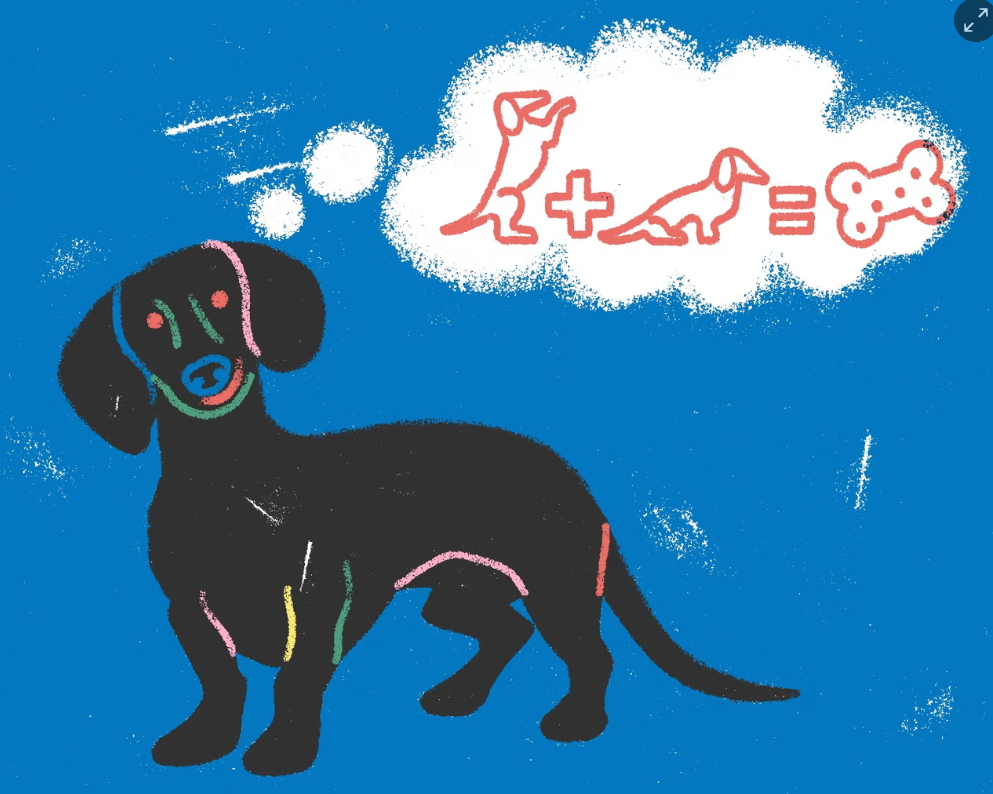
It doesn’t have to be miserable. We asked experts how best to start training your new (or old) best friend它不必痛苦。我们请教专家如何最好地开始训练你的新(或旧)最佳朋友
My family has never been closer to the brink of collapse than when we got a puppy. We spent hours reading articles and watching videos about puppy training, and were constantly arguing about the right way to potty train him or get him to stop barking.在我家,自从我们领养了一只小狗以来,我们从未像现在这样接近崩溃的边缘。我们花费了数小时阅读关于小狗训练的文章和观看视频,并且一直在争论如何正确地训练它上厕所或者停止吠叫。
Every new piece of information seemed to contradict what we’d already learned – never scold him! Scold him! – but one thing was certain: make one wrong move and you will ruin your dog and your life forever.每一条新信息似乎都在与我们之前学到的知识相矛盾——永远不要责骂它!责骂它!——但有一点是确定的:一旦犯了一个错误,你将永远毁掉你的狗狗和你的生活。
We had fallen into a common trap.我们陷入了常见的陷阱。
“The No 1 mistake people make [when training] is thinking, I have to make my dog be perfect and sit all the time, instead of remembering why we got a dog and that we’re meant to have fun together,” says Amanda Gagnon, a zoologist, behavior consultant and dog trainer in New York City.《训练狗狗的 1 号错误:认为狗狗必须完美无缺,时刻坐着,而不是记住我们为什么养狗,以及我们本应一起享受乐趣,纽约市动物学家、行为顾问和狗狗训练师 Amanda Gagnon 说。》
Training is how a dog and a human learn to communicate with each other and build a relationship, says Gagnon. This is essential to a dog’s safety and happiness, but it doesn’t need to be a joyless chore.加农说,训练是狗和人类学习相互沟通和建立关系的方式。这对狗的安全和幸福至关重要,但并不需要成为一种无趣的任务。
We talked to experts about how to start training your dog – in a way that won’t make you lose your mind.我们与专家交谈,了解如何开始训练你的狗——而不会让你失去理智。
Manage expectations管理期望
Between social media, Lassie reruns and basic perfectionism, humans can sometimes have unrealistic standards for dogs.在社交媒体、拉西重播和基本完美主义之间,人类有时会对狗有不切实际的标准。
“A lot of people get stuck on the Instagram-perfect dog that is always happy and never has negative emotions,” says Alex Sessa, the owner and head trainer of Peach on a Leash in Atlanta.很多人卡在了 Instagram 上那种总是快乐、从无负面情绪的完美狗狗上,”亚特兰大的 Peach on a Leash 宠物训练中心的拥有者和首席训练师亚历克斯·塞萨说。
But dogs are individuals with different personalities and needs. Maybe you wanted a dog that accompanies you to the farmer’s market every Saturday, but crowds make your dog feel stressed.但狗是具有不同个性和需求的个体。也许你想要一只每个周六都陪你一起去农夫市场的狗,但人群会让你的狗感到压力。
That’s not a problem, says Sessa – people just need to adjust their expectations accordingly. “That’s still a great dog. There’s nothing wrong with the dog that doesn’t want to go everywhere with us,” she says.Sessa 说这不是问题——人们只需要相应地调整他们的期望。“那仍然是一只好狗。狗不想随时随地跟着我们,这并没有什么问题,”她说。
And expecting your dog to always be perfectly calm can lead to greater behavioral trouble down the road, says Gagnon.狗总是保持完美冷静的期望可能会导致未来的行为问题,Gagnon 说。
“When we don’t give our dogs outlets to express themselves as dogs – meaning barking and running and being bananas in general – those needs get suppressed, and when that happens, it’s like a powder keg that’s going to explode at any moment,” she says.“当我们不给我们狗狗提供作为狗表达自己的途径——也就是说吠叫、奔跑和总体上疯狂——那些需求就会被压制,当这种情况发生时,就像一个随时可能爆炸的火药桶,”她说。
Give them time to settle in给他们时间安顿下来
Whether you’re bringing home a puppy or an adult dog, experts agree it is important to give them plenty of time to acclimate.无论你是带回家一只小狗还是一只成年狗,专家们一致认为,给他们足够的时间去适应是很重要的。
“Don’t jump into too much obedience right away,” Sessa says. “We don’t want the dog to immediately feel like we’re barking commands at them and asking them to do a million things.”“不要一开始就训练太多服从,”塞萨说。“我们不希望狗立刻觉得我们在对他们吠叫命令,要求他们做很多事情。”
Adult dogs in particular can take up to three months to settle into a new home and show their true behavior pattern, says Ciera Moberg, a certified dog behavior consultant and co-founder of Instinct Dog Behavior & Training in Washington DC. The way your dog acts the first day you bring them home might be completely different than the way they act on day 30.特别是成年狗可能需要三个月的时间才能适应新家并展现出它们真正的行为模式,Ciera Moberg 说。她是一位认证的狗行为顾问,也是华盛顿特区 Instinct Dog Behavior & Training 的联合创始人。你的狗在你带它们回家的第一天表现可能与第 30 天完全不同。
Once your dog is comfortable and you have a better understanding of their personality – what they enjoy, what makes them nervous – it will be easier to figure out how you want to focus your training.一旦你的狗感到舒适,你对它们的个性有了更好的了解——它们喜欢什么,什么会让它们紧张——那么确定你想要如何专注于训练就会更容易。
Figure out what commands your dog really needs弄清楚你的狗真正需要的指令
Most people don’t need to teach their dog as many commands – some trainers call them cues – as they might think.大多数人不需要教他们的狗那么多命令——一些训练师称之为提示——就像他们可能认为的那样。
“You only absolutely need two cues,” says Gagnong. “You need ‘sit’, and you need ‘come’.”“你只需要两个绝对必要的信号,”加农说,“你需要‘坐下’,你需要‘过来’。”
Sit. When a dog is sitting, “there are very few behavioral problems they can exhibit,” says Gagnon. “This is about getting them into a calm position.”坐下。 当狗坐下时,“它们能表现出的行为问题非常少,”Gagnon 说。“这是关于让他们进入一个平静的位置。”
To teach a dog to sit, say the word and then use a treat to get them into a sitting position, Gagnon says. Usually this can be done by showing them a treat and then moving it over and slightly behind their head, so when they track it with their nose, their head moves up and back and their rear drops.教狗坐下,先说出这个词,然后用零食让它们进入坐下姿势,加农说。通常,你可以通过展示零食,然后将其移到它们头部上方和后方,这样当它们用鼻子追踪时,它们的头部会向上和向后移动,而后腿会放下。
Come. A recall cue is essential for safety. “Teaching a dog to come when called is about preventing them from running off into the road or into a dog fight,” says Gagnon.来吧。 回叫信号对于安全至关重要。“教狗在呼唤时回来是关于防止它们跑到路上或狗群中去,”Gagnon 说。
To teach a dog to come, you start by standing close to them, saying the cue, and giving them the treat when they come to you. Then you take a step back, and do the same thing. Over time, you call the dog from a greater and greater distance.要教狗回来,你首先站在它们附近,发出信号,当它们来到你身边时给予奖励。然后你退一步,重复同样的动作。随着时间的推移,你从越来越远的地方呼唤狗。
Moberg says she also likes to teach dogs “touch”, where their nose presses into the palm of your hand.Moberg 还说,她也喜欢教狗“触摸”,即它们的鼻子压在你的手掌上。
“It allows you to move the dog without having to physically manipulate their body,” she says.它允许您在不需物理操作狗的身体的情况下移动它,”她说。
after newsletter promo
To train this, say the cue, hold an open hand out at snout level, and when your dog touches it with their nose, give them a treat. Repeat.训练这个,说出提示语,将一只张开的手放在狗鼻子的高度,当你的狗用鼻子碰到它时,给它一些奖励。重复。
Besides basic safety commands, think about training functionally, Sessa says. What is important for you and your dog’s life together? Maybe your dog never needs to be able to lie down, but they need to be able to walk well on a leash. “So focus on that,” says Sessa. “There’s no one-size-fits-all training regimen.”除了基本的安全指令外,Sessa 建议考虑功能性训练。对你和你的狗的生活来说,什么才是重要的?也许你的狗永远不需要学会躺下,但它们需要能够很好地在牵引绳上行走。“所以专注于这一点,”Sessa 说。“没有一种适合所有人的训练方案。”
There’s no need to spend hours on training. Sessa says she usually suggests her clients work with their dogs for no more than 10 to 15 minutes a day.没有必要花几个小时在训练上。Sessa 说她通常建议她的客户每天最多与他们的狗一起训练 10 到 15 分钟。
For puppies: socialize, socialize, socialize对于小狗:社交,社交,再社交
A lot of people think socializing a puppy means introducing them to as many other dogs as possible, says Gagnon. It’s actually a much broader task. “It’s about introducing them to everything that’s going to be a part of their world in a positive way,” Gagnon says.很多人认为社会化小狗就是尽可能让它们接触更多的其他狗,Gagnon 说。实际上,这是一个更广泛的任务。“这是关于以积极的方式让它们接触将来将成为它们世界一部分的一切,”Gagnon 说。
If you live in a loud, busy city, for example, it is important to help your puppy get used to loud city sounds. But don’t overdo it.例如,如果你住在嘈杂、繁忙的城市,帮助你的小狗适应城市中的嘈杂声音是很重要的。但不要过度。
“It’s not good socialization to take a puppy and put it down right next to a jackhammer,” says Gagnon. If a puppy seems scared or like they’re trying to hide, it is important not to push them or make them uncomfortable.“把小狗放在电钻旁边并不是一个好的社会化方式,”Gagnon 说。如果小狗看起来害怕或者像是在试图躲藏,重要的是不要强迫它们或者让它们感到不舒服。
完型填空练习
When my family first brought home a puppy, daily life quickly turned into a battlefield. We devoted hours to reading articles and watching tutorials, yet the guidance often (1) each other. One trainer insisted on never scolding, while another urged the opposite. Soon we felt that a single misstep might permanently (2) our dog’s future.
Experts warn that the greatest mistake is expecting absolute (3) from a dog. Many owners imagine a pet that sits quietly in cafés or strolls happily through markets. But dogs, like humans, have distinct (4). Some thrive in crowds; others grow anxious. Denying them natural outlets such as barking or running can create a hidden (5) of frustration that may explode later.
Patience is equally vital. A new dog requires time to (6) into a household. The playful pup you see on day one may display completely different patterns weeks later. Immediate, rigid training often leaves the animal confused or even (7).
As for obedience, fewer commands are truly necessary. Experts argue that “sit” and “come” are the most (8). “Sit” helps restore calm, while “come” can literally save a life by preventing accidents. Another useful cue is “touch,” enabling owners to guide movement without (9) force.
Equally important is socialization, which extends far beyond meeting other dogs. Puppies must gradually encounter noises, people, and environments they will face as adults. But exposure should be controlled. Placing a puppy (10) a jackhammer is counterproductive; letting it listen from a safe (11) while receiving treats builds a positive (12).
Nevertheless, some cases demand professional help. Persistent aggression or deep anxiety should not be handled alone. Qualified trainers, ideally certified by organizations such as CCPDT or IAABC, can design strategies to prevent future (13). Choosing the wrong trainer, however, may only (14) the situation.
In the end, training should never feel like punishment for either party. With balance, care, and consistency, owners and dogs can not only coexist peacefully but also truly (15) the companionship they share.
-
A. contradicted B. confirmed C. replaced D. clarified -
A. compromise B. determine C. ruin D. guarantee -
A. obedience B. perfection C. affection D. protection -
A. appearances B. personalities C. memories D. origins -
A. resource B. reservoir C. result D. relief -
A. blend B. transform C. escape D. occupy -
A. delighted B. threatened C. distracted D. cautious -
A. reliable B. optional C. indispensable D. temporary -
A. exercising B. applying C. discovering D. reducing -
A. on top of B. far from C. next to D. opposite -
A. distance B. moment C. chance D. corner -
A. connection B. atmosphere C. association D. imagination -
A. failures B. conflicts C. traditions D. practices -
A. complicate B. accelerate C. substitute D. conceal -
A. ignore B. resist C. cherish D. analyze
答案与解析
- A. contradicted 文章说“一些建议互相矛盾”,符合语境。
- C. ruin “毁掉狗的一生”语境下,ruin 最合适。
- B. perfection 人们误以为狗要“完美”。
- B. personalities 狗也有不同个性。
- B. reservoir “积蓄的压力” → reservoir of frustration。
- A. blend 新狗需要融入新家。
- B. threatened 过早严格训练会让狗感到被威胁。
- C. indispensable “sit”和“come”是不可或缺的。
- B. applying “touch”训练避免施加强制力。
- C. next to 不能把小狗放在“紧挨着”噪声的地方。
- A. distance 在安全的距离内听噪声才合适。
- C. association 训练是建立积极联想。
- B. conflicts 预防未来冲突或危险。
- A. complicate 选错训练师会使情况复杂化。
- C. cherish 最终目标是珍惜陪伴。
语法填空:
高难度语法填空 (10题)
For centuries, dogs have lived alongside humans, (1) ______ (serve) not only as companions but also as hunters, guards, and even rescuers. Today, however, many families expect a newly adopted dog to behave like an “Instagram star,” calm and polite from day one. Such expectations are unfair, for they assume dogs should suppress instincts (2) ______ are essential to their well-being.
Experts emphasize that training is not merely about control; it is about building communication. A puppy suddenly exposed to strict commands without time (3) ______ (adjust) is likely to feel overwhelmed. The proper approach is to let the dog gradually settle, as if it (4) ______ (be) a guest learning the customs of a foreign country.
When it comes to obedience, only a few cues are indispensable. “Sit” and “come” may sound simple, yet without them accidents can occur before the owner realizes what (5) ______ (happen). Another underrated cue is “touch,” by which the dog follows a hand signal rather than (6) ______ (drag) by a leash.
Socialization, too, is easily misunderstood. To place a puppy right beside a jackhammer, in the hope that it will “get used to noise,” is not only unwise but dangerous. Far better is to expose it at a distance, rewards (7) ______ (offer) whenever it remains calm. Only then will positive associations form instead of fear.
Professional help becomes essential when aggression appears. Some owners hesitate, believing the problem will disappear by itself, but rarely (8) ______ (do) such issues resolve without guidance. If a qualified trainer is consulted early, the situation might be corrected before it spirals out of control, whereas waiting may require solutions far more costly than those (9) ______ (apply) in the beginning.
Ultimately, training should be regarded not as a burden but as a mutual journey, during which the human learns patience and the dog loyalty. It is this very journey, rather than the perfect tricks seen online, (10) ______ proves the value of companionship.
答案与解析
- serving → 非谓语动词作状语,说明“伴随功能”。
- that/which → 引导限制性定语从句,修饰 instincts。此处不能省略,否则句子残缺。
- to adjust → time + to do,表示“用于做某事的时间”。
- were → 虚拟语气:as if it were a guest。
- has happened → 现在完成时,表示“已经发生”,比一般过去时更精确。
- being dragged → 避免被动语态错误,动名词形式作介词 by 的宾语。
- being offered → 被动进行式,rewards 被“给予”。
- do → 倒装结构:rarely + 助动词 + 主语 + 动词。
- applied → 定语从句省略关系代词,“比一开始所采用的解决方法”。
- that → the very journey that proves… → 定语从句。
-
扫码访问小程序中的本文
















暂无评论内容